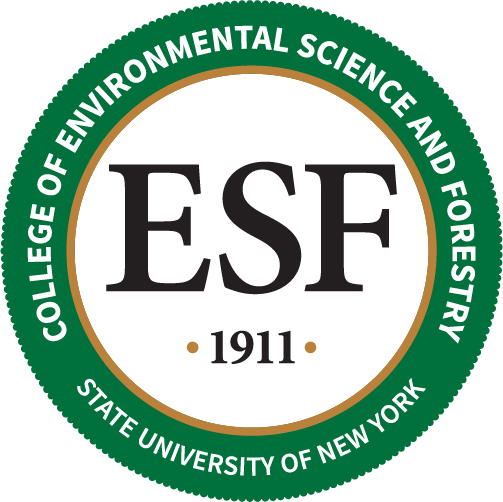Newswise — SYRACUSE, N.Y. — Landscape architects who want to design healing gardens to help people struggling with serious illness need to first understand more about the needs of the people who will use those spaces, according to a recent college graduate who did his independent research project last winter while undergoing treatment for leukemia.
Kevan Busa, who graduated from the SUNY College of Environmental Science and Foresty (ESF) here with a bachelor’s degree in landscape architecture in May, based his study on his battle with acute lymphoblastic leukemia and the bone marrow transplant that kept him hospitalized for three months at Roswell Park Cancer Institute in Buffalo.
“It was not the foreign culture I set out to study, but I got a whole new view on designing landscapes from living in a hospital,” he wrote.
Busa started on his unexpected journey in May 2012.
After four years as a member of the ESF Mighty Oaks soccer team, he was headed for a change in the fall of his fifth year. He was preparing to travel to Barcelona for his off-campus semester, the centerpiece of ESF’s landscape architecture program, when he sought treatment for a fever, dizziness and leg pain. He was quickly diagnosed with leukemia and he spent most of the summer hospitalized in Syracuse before he was transferred to Roswell for the transplant.
“I still wanted to graduate on time and do my off-campus project,” he said. “But when you’re spending two straight months in a hospital room, there really isn’t any other culture.”
Busa wasn’t the only person who wanted his education to stay on track. “We wanted him to graduate on time,” said Richard Hawks, who recently stepped down as chair of the ESF Department of Landscape Architecture. “So we decided to build on the experience he was having and not pretend it wasn’t happening. He did the research and wrote a paper. He did a very nice project.”
With guidance from Hawks and his advisor, Scott Shannon, who teaches in the LA department as well as serving as associate provost and dean of the graduate school, Busa plunged into online research, learning how healing spaces are designed and how they differ depending on their intended audience, be it the elderly, children or veterans. He learned that although existing research extolls the natural environment’s ability to speed the healing process, he wasn’t even allowed to have flowers in his hospital room because of his compromised immune system.
“How are these healing spaces going to help me if I can’t even have one teeny plant next to me?” he said. “Healing spaces are meant to help you but they’re not safe for someone who has had a bone marrow transplant.”
Busa said he was not allowed to visit Kaminski Park & Gardens, an outdoor space designed for use by hospital patients, their family members and the staff. His magazine story details the problems: The chemotherapy and radiation had made him sensitive to sunlight and there was little shade in the park. The pollen, dirt and fungi that occur normally threatened his immune system. The use of mowers and leaf blowers stirred up particles that hampered his breathing. Sometimes there were crowds of people there, which he needed to avoid. Even a walk on bumpy pavement was difficult because of the IV pole that was by his side for two months.
In the hospital, Busa surveyed 90 people about healing gardens and found what they most enjoyed was the plantings and exposure to the sun, the very things he needed to avoid.
He wrote: “For many patients with compromised immune systems, the solution may be gardens that can be experienced from indoors, through glass. This idea may not sound terribly inviting, but it is a far preferable alternative to 100 days of brick walls.”
He wrote a first-person piece about his experience in the June 2013 issue of Landscape Architecture Magazine, published by the American Society of Landscape Architecture.
Busa is working full time this summer as an intern with the Syracuse Metropolitan Transportation Council, where he focuses on planning issues. He is interested in pursuing opportunities in the field of health care design. In the meantime, he has been invited to speak Sept. 26 at the American Institute of Architects state convention in Syracuse. He will give a 45-minute presentation to share his study. His presentation falls one day short of the one-year anniversary of his bone marrow transplant.
Hawks said Busa has already given professional landscape architects something to think about.
“People in the profession are now able to look at an area of practice that, fortunately, many people don’t get to see from Kevan’s perspective,” Hawks said.
He said it’s rare for a recent graduate to have a first-person piece published in the professional magazine. “I don’t recall it happening,” he said. “But from a human interest angle, it was a unique story and worth telling.”
Brad McKee, who has served as editor of the magazine for three years, said it’s unusual to feature the work of an undergraduate.
“They usually don’t get a lot of attention but that doesn’t mean they haven’t done much,” he said. “Kevan’s story was really interesting, it really struck a chord with me. He was there and he used his time wisely. He had a really unusual point of view. We don’t get a lot of stuff like that. All the pieces came together in a really profound and sobering way. Plus, given his situation, who’s not going to read it?”
